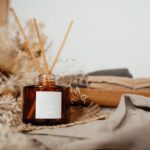If you’re looking to buy rum bottles, you’ll probably want to find something unique, engaging, and memorable. This is especially true if you’re buying something for a gift.
Reproductions of Rum Bottles
If you’re looking to buy a reproduction of a rum bottle, you may want to know what you’re buying. Aside from the obvious question of whether or not it is authentic, you’ll also need to know the basic shapes and styles. There are many different styles and variations of rare rum bottles.
One example is a classic Rickett’s type mold. It has a domed center and a flattened round ring around the center. There is a slight amethyst tint to the glass. The base is textured with a glossy surface at the shoulder. This is a common shape for liquor bottles during the 1910s and 1920s.
Other similar bottles were made in dip and three-piece molds. Early bottles have a mineral finish and tend to be free-blown. Later bottles have tooled finishes and often have external screw threads.
Another example is a calabash. This one has an image of Jenny Lind (Swedish Nightingale). She was a singer and actress. Her image is stamped on the front. The word JENNY LIND is embossed on the front as well.
Chestnut Flasks
Flasks are decorative, small bottles that hold liquid products such as liquor. There are many different types, shapes and sizes. Most of them are made from glass and are usually light in weight. A few have been machine-made, but they are rare.
Chestnut flasks, also known as New England chestnut flasks, were made in the late 18th and early 19th centuries. They were produced in several glasshouses along the Eastern Seaboard.
Early flasks were flat-sided and pear-shaped. They were manufactured in dip molds, in three-piece Rickett’s type molds, or free-blown. The finishes included simple sheared and cracked-off or a re-fired finish.
Many of these flasks were designed to fit in a pocket or purse. Some are still around today. One of the more famous flasks is George Washington. However, flasks can be made in many different sizes and colors.
Cornucopia flasks are another popular style. Their color ranges from amber to olive green, and they almost always have a straight pontil. Pontils are typically glass-tipped, but iron ones are rare.
Figured Flasks
Figured flasks are a large category of liquor flasks. They vary in color, size, shape, and manufacturing methods. Some are made of glass works, and some are handmade. The latter are often referred to as figured flasks because of their decorative designs.
One of the most familiar images of figured flasks is the American eagle. This design is usually embossed on both sides of the bottle. However, other emblems, such as anchors and Columbia, are less common than the eagle.
Another typical design is an urn with fruit. This motif was popular in the arts and crafts through the first half of the 19th century. Many of the bottles pictured above are from this period.
Shield and clasped hands flasks are another type of calabash. These flasks are typically flatter than the Pike’s Peak flask. In addition, they are sometimes pontil scarred. Pontil scars are usually made from iron.
Embossed Flasks
A figured flask is a type of liquor bottle characterized by embossed designs. The style varies from bottle to bottle. It has various features, including molded designs, finishes, and sizes.
Figured flasks were popular during the 1820s to 1860s. They were also known as portrait, pictorial, and decorative flasks. Although there are dozens of figured flasks, the most common are portrait flasks.
These flasks bear images of famous individuals. Some of the most famous figured flasks are the George Washington and Zachary Taylor flasks. Other flasks depict DeWitt Clinton, General Lafayette, and Louis Kossuth.
Figured flasks are often associated with sports. Many of them were manufactured during the gold rush of the 1858-1859 period. This is reflected in many flasks with the Pike’s Peak theme.
Another figured flask is a cornucopia flask. The cornucopia was a symbol of good fortune for the young country. In the 1860s, the flask was produced in a two-piece key mold.
During the early 20th century, figured flasks were re-produced. Although the originals are hard to tell from their reproductions, they can be distinguished.
Squat Cylinder Spirits Bottles
Squat cylinder spirits bottles are a relatively common form of liquor bottle. These types were popular in the late 19th and early 20th centuries. They were also known as “Squat Brandy” in some glassmaker catalogs. There are a wide variety of shapes and sizes.
The most common sizes were quart and fifth. These types were used for spirits, brandy, and wine. They were made in the United States and Western America. Some glassmakers called them “squat brandy” because of their shape.
Typical attributes of a squat cylinder spirits bottle are a straight-sided neck and a comparatively long body. A few of these types have fluted shoulders. Other features include a post-bottom mold conformation and an applied finish. Most have a molded bead at the base of the neck for styling reasons.
Early examples have a mineral finish. Later versions have a tooled finish. Also, the base of the bottle may have been machined. Decorative shoulder styles are also an option. Typically, they are more ornate. One style, Starlight Brandy, has swirled and fluted features on the lower shoulder.




